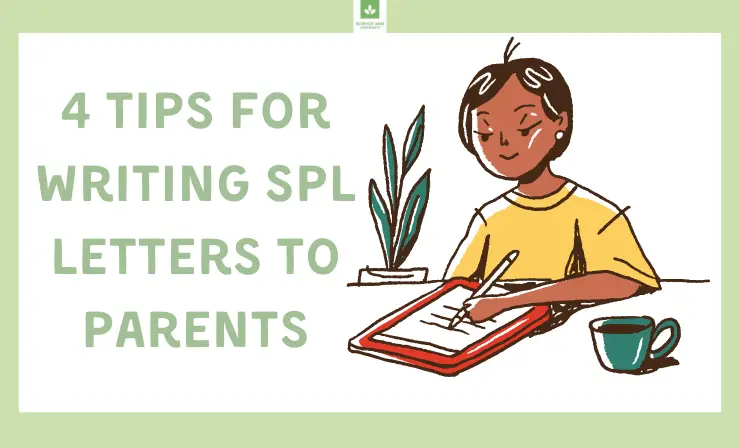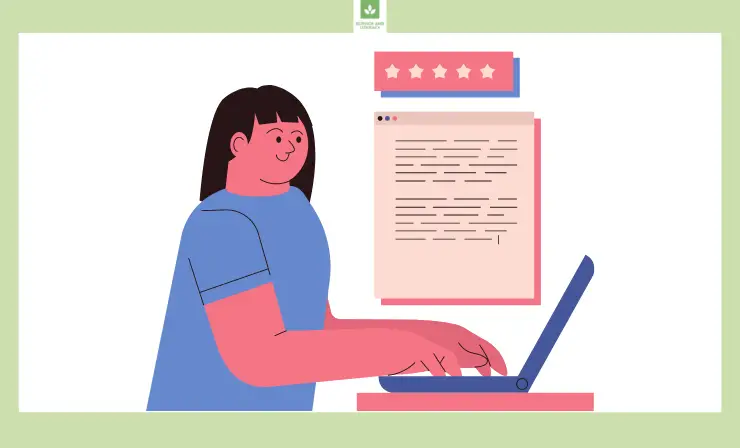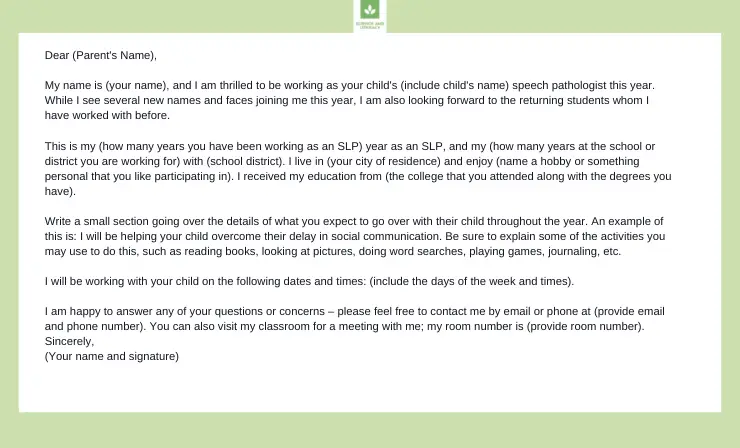As a school speech language pathologist (SLP), I wanted to take the time to educate my readers on specific things that I did not know about when I first started my career. After careful thought and research, I decided that the best place to start is teaching you how to write an SLP introduction letter to parents.

This is very important to know because it is the first impression that you will have on many of the parents who receive your letter. You want to make sure that the impression you make is good and that they feel their child is in good hands when with you.
After reading this article, you will officially know:
- What an SLP introduction letter to parents is→
- The requirements for an SLP letter→
- How to create a good cover letter for a speech language pathologist→
- Tips and trick for your SLP letter→
- Examples of SLP letters→
What is an SLP introduction letter to parents?
An SLP introduction letter is the best way to reach out to the parents or guardians of the children that you are working with. The objective of this letter is to introduce yourself and let the parents know what you will be helping their child with. You should keep the letter short and to the point, letting them know exactly who you are and providing a good introduction about your background. Before you end the letter, I recommend providing your contact information if they have any questions for you or would like to speak further. Do not forget to state in the letter how you are excited and looking forward to working with their child/ children.

Overall, the SLP introduction letter will allow the families of the children to have access to all the information that they may need about you. As parents are sometimes rushed during meetings or do not have time at all to attend, an introduction letter is beneficial for them to have at home. You can send this letter via email, mail, or with the child. However, it is crucial that you make sure that they do in fact receive it.
Requirements for an SLP letter
There are several requirements for an SLP letter which I will address in this section. You can make this letter informative, colorful, and fun, but there are a few things that need to be included.

Below, I will list these nine things that are required for an SLP letter:
- Your name
- The name of the child that you are working with
- The name of the school and district if you are a school SLP
- Where you earned your education
- A few details of your background in speech language pathology
- What your goals are while working with their child
- If you know when you will be meeting with the child, you can include days of the week and times
- Your phone number and email address for them to contact you if needed
- Your signature
If you are creating your resume for a career in the SLP field, take a look at Carrie Clark’s YouTube video. This video is very informative and will show you how you can make your resume stand out among the competition in the field.
Now, I will go over cover letters for speech language pathologists.
How to create a good cover letter for a speech language pathologist
If you are in the middle of applying for speech language pathologist jobs and need help creating a cover letter, I can help you with that as well. My advice is to first and foremost make sure that you are writing your cover letter to fit the needs and duties of the job you are applying for. This is very important because different job postings will ask for different duties, skills, experience, and education requirements. You will most likely need to tweak every cover letter to fit the essentials for the job. An example of this is if you are applying to be a school SLP you will need to show that you have some experience with children.

You will also need to mention your education and skills. Include your undergraduate degree and graduate degree. If you also have any certifications or licenses, I highly recommend writing about them. Most employers will only hire certified speech language pathologists. If you do not have much experience in the field, you can instead relate the career duties to coursework that you completed. Real-world experience is also commonly used.
My last recommendation is to think of something that will make you stand out among other people who may also be applying for the position. Take the time to ponder on this as it should be something incredible. The goal is to impress the employer and show them why they should pick you over everyone else.
To see an example of a cover letter, check out Delescen Insights’ YouTube video. In this video, he will show you a great cover letter example for a physical therapist assistant. You can take this knowledge to create a speech language pathologist cover letter.
Another video that I recommend watching is Andrew LaCivita’s YouTube video. He will tell you about cover letters that only require four sentences and will get you the job. I think this video will be beneficial to you if you are job searching for a job in the speech language pathologist field.
Next, I will tell you about a few tips and tricks when writing an SLP letter.
4 Free Tips and Tricks for an SLP introduction
There are many tips and tricks that I like to share with other speech language pathologists because they have helped me build wonderful relationships with families. I also wish that someone would have shared them with me when I first started my SLP career, so my hope is that they will help someone else who needs them.

I will now tell you about a few of these tips and trick in which I think you will find handy just like I did.
- When you are sending your SLP introduction letter to parents, try to include other forms that the parents can look over. This will show them that you are professional as well as dependable. One of my favorite forms to include is a communication log. This form is a way for parents to communicate with me. Some parents may have a question or concern and not have time to call me, so this is an easy way for them to write down anything they would like to address with me.
- Another form you can include is an attendance form. This can show a calendar with the dates that the child is scheduled to meet with you. Another detail that I would include in this form is if the child attended their session or not. A parent needs to know if their child missed a session and when upcoming sessions are.
- You may find it beneficial to include a photo of you. By doing so, parents can see what you look like and put a face with your name. This will be beneficial if they need to meet with you and know who to look for. Make sure that it is a photo that makes you look professional and friendly.
- There are also templates that you can print out and make fun for your SLP introduction letter. These templates are colorful and easy to read. Take a look at Teachers Pay Teachers to see several different templates that you could use.
For a quick video on SLP welcome letter tips, watch Jenna Kirk’s YouTube video. She explains that a welcome letter is very important. Therefore, you should take her advice when creating one.
If you are a speech language pathologist helping children with language and speech, head over to my other article that will inform you on the best cameras for recording lectures by clicking “here.” These cameras are fantastic devices for allowing your students/ young clients to go back and listen to your lectures to help refresh their memory.
Updated my Back to School newsletter and it is ready to be mailed to welcome my students. My introduction letter has also been updated and is ready to be given to parents at our Sneak a Peek! @Hillcrest_BCPS #GettingReady pic.twitter.com/1Abik8YhVT
— Tania Myers (@MrsTmyers2) August 20, 2018
Example of SLP Letter to Parents
With all this information, you may find yourself still a little confused or wonder if you have included everything in your SLP letter to parents. I will provide a quick example for you to look over below.

Useful Recourses:
- 20 Tips for Great Job Interviews
- How to prepare for a strong start to the school year
- 3 Ways to Make a Good Impression on the First Day of School
Conclusion
I hope this article helped you understand how to write an SLP introduction letter to parents. These types of letters are significant in the speech language pathologist profession. Therefore, it is important to be aware of everything that should be included in the letters. They are the starting point of creating a good relationship with your young client’s parents, which will be beneficial throughout your time with them. Good luck!
- Overview of 22 Low-Code Agencies for MVP, Web, or Mobile App Development - October 23, 2024
- Tips to Inspire Your Young Child to Pursue a Career in Nursing - July 24, 2024
- How Parents Can Advocate for Their Children’s Journey into Forensic Nursing - July 24, 2024
